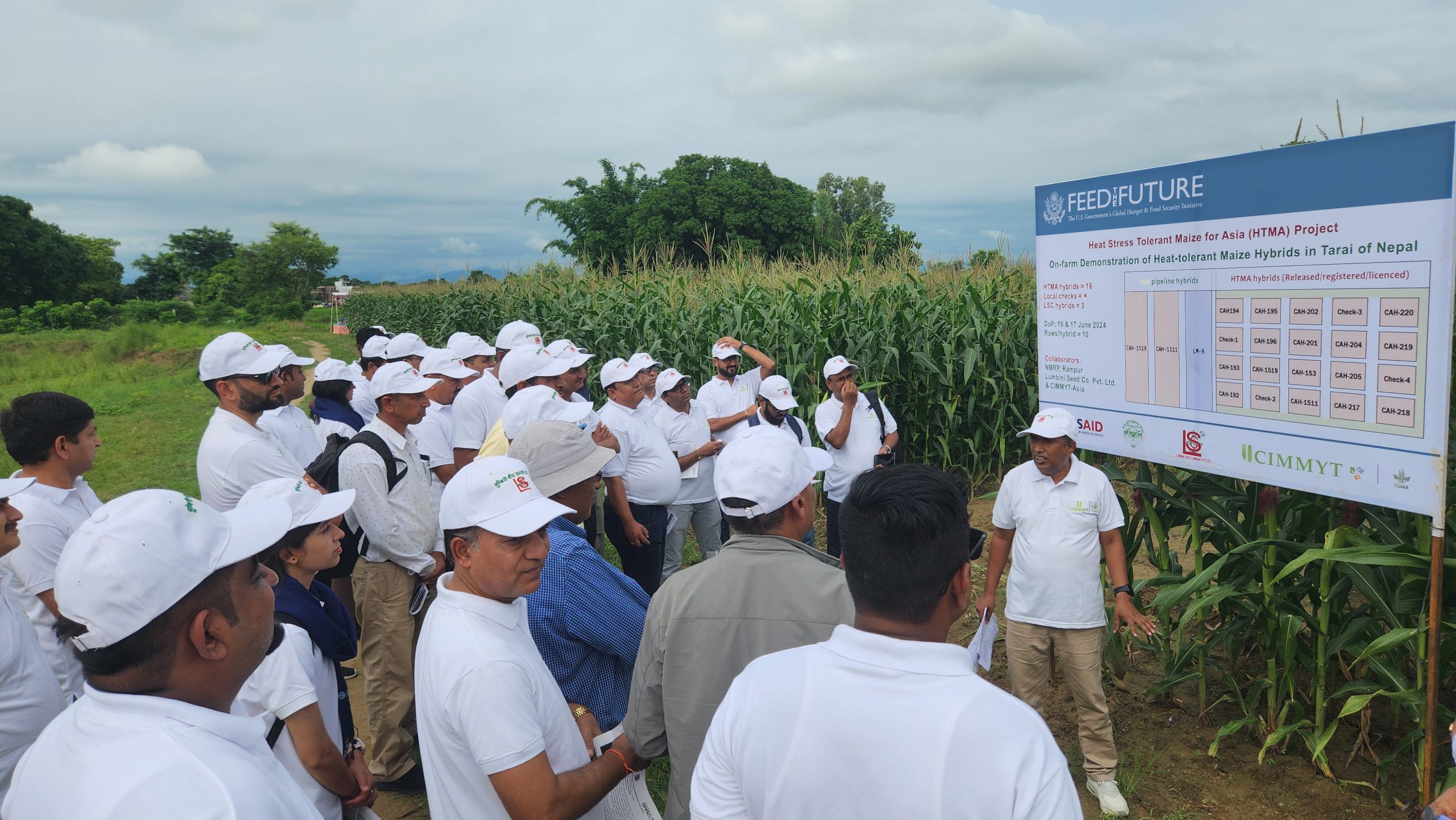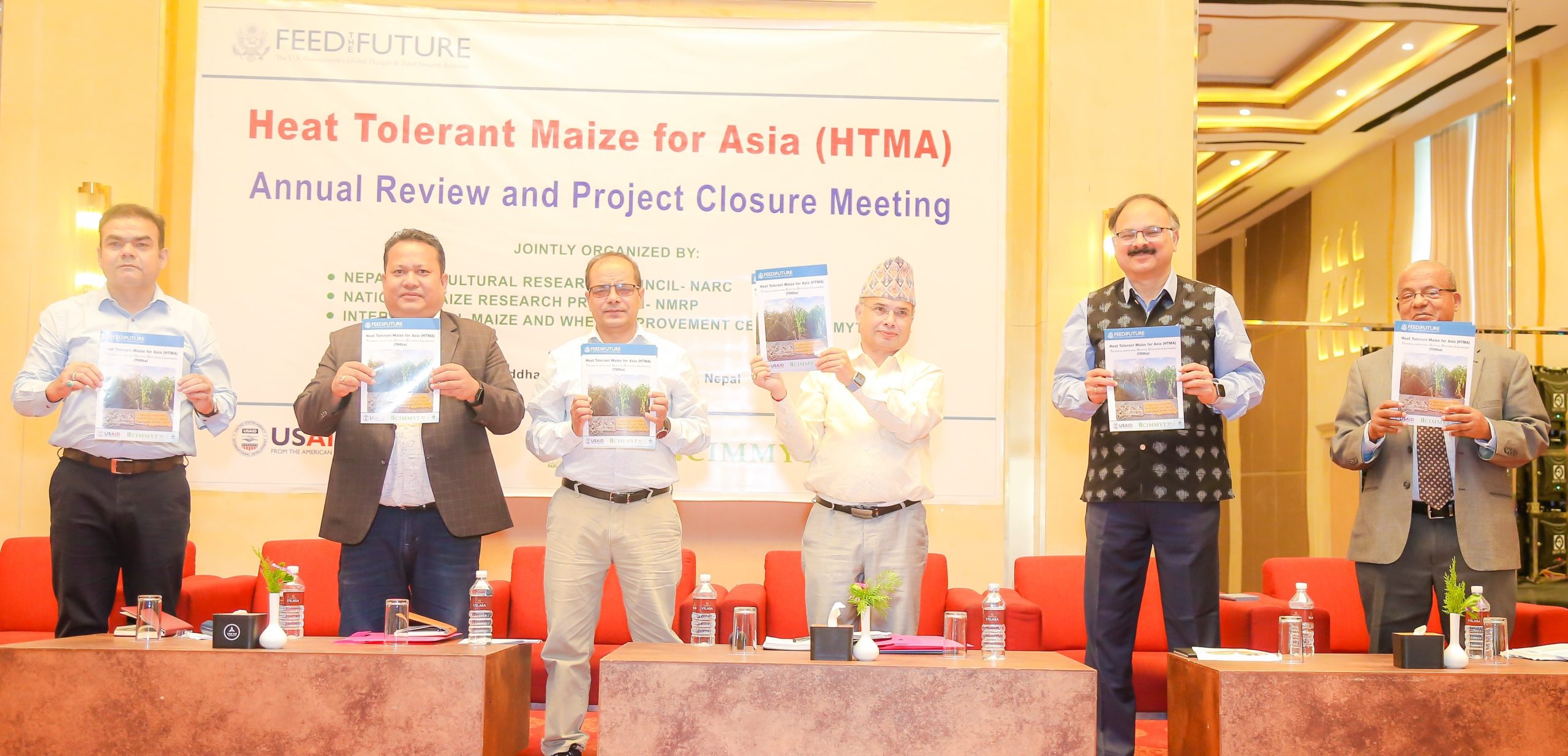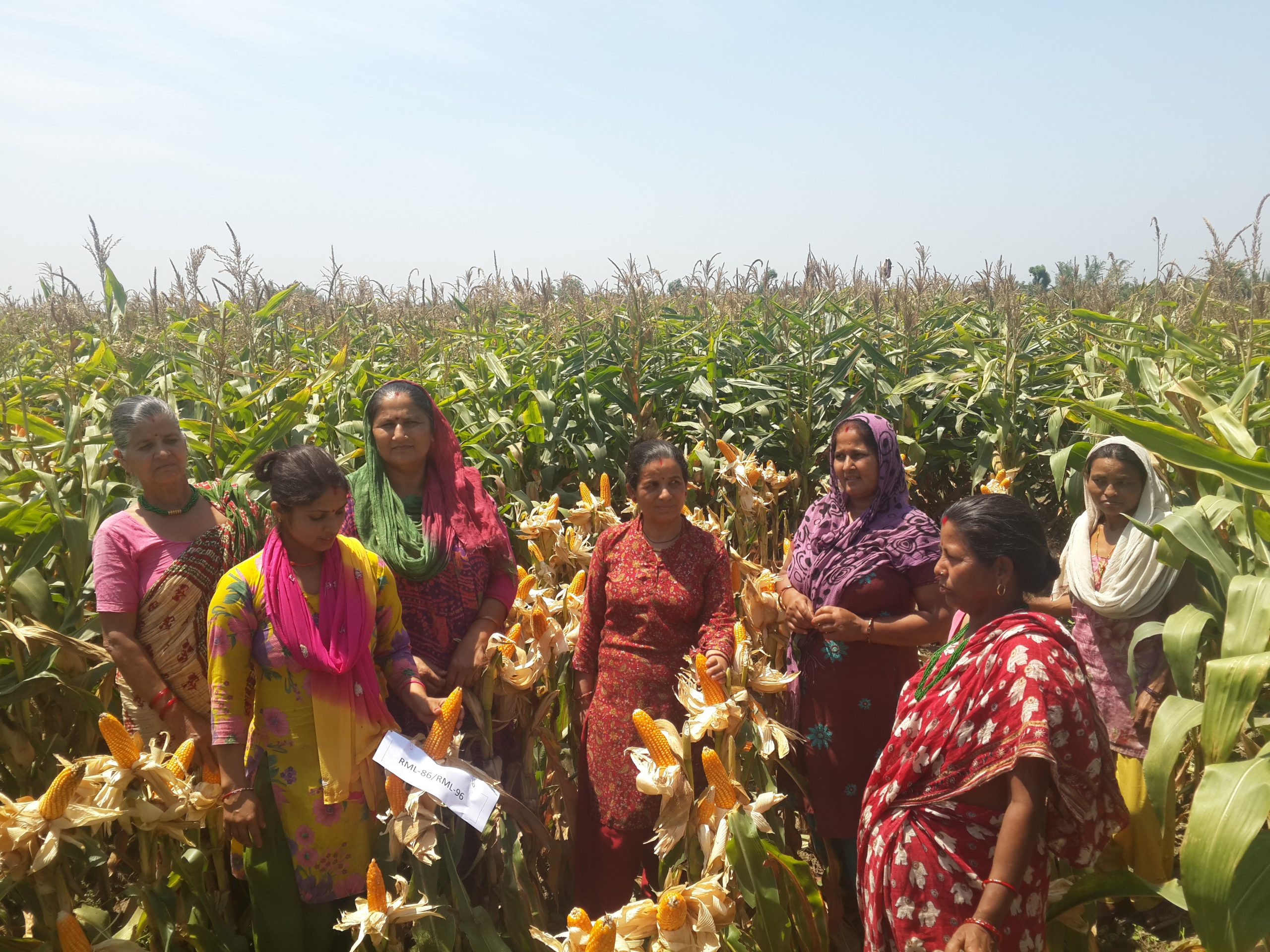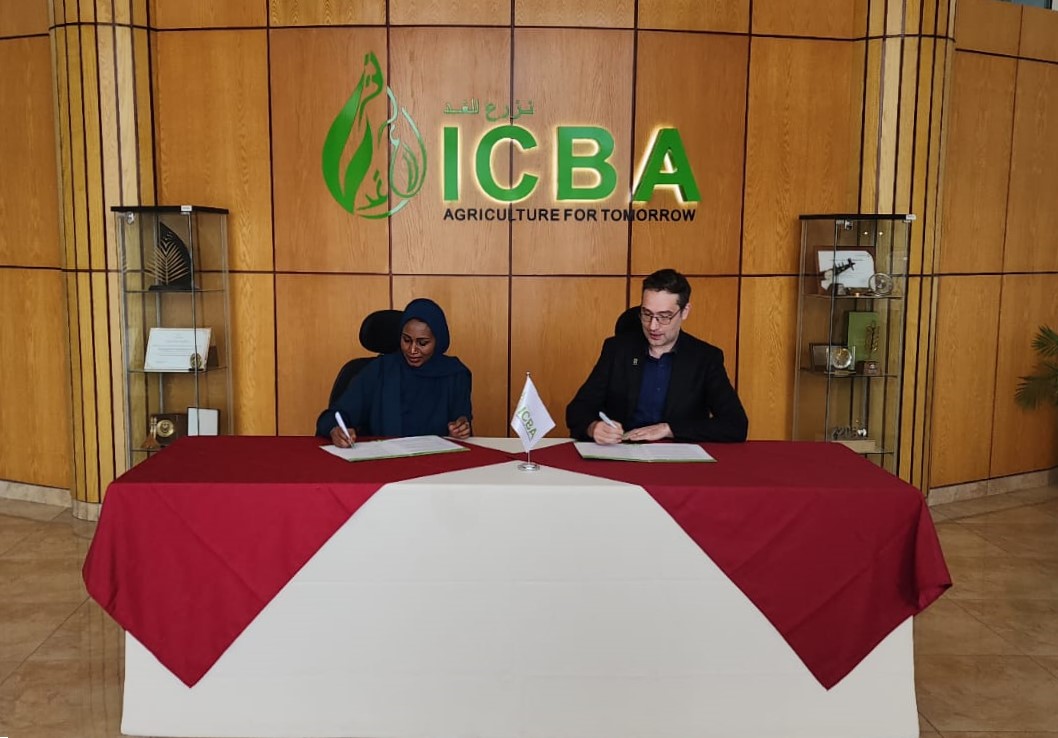South Asia, a region heavily impacted by climate change, faces rising temperatures, erratic monsoon rains causing intermittent drought and excessive moisture within the season, and frequent episodes of heat waves. These extreme weather events are challenging agrarian practices and affecting millions, especially smallholder farmers dependent upon rainfed cultivations. The halcyon days of consistent environmental conditions are gone, and adaptation and mitigation strategies have become essential in South Asia.
In May 2024, over 20 districts in the Terai region of Nepal and many parts of northern India recorded maximum temperatures between 40°C and 45°C, with several districts also experiencing heat waves during the same period. The temperature rise is not limited to the lowland plains; the effects are also being felt in the mountains, where rapid snowmelt is becoming increasingly common. In the Hindu Kush Himalayas region of Pakistan, farmers have had to shift their cropping cycles by a month to cope with drought stress caused by rising temperatures, which are leading to the early melting of snow in the region.

Collaborating to rise above the challenge
Amid the growing climate crisis, the Heat Stress Tolerant Maize for Asia (HTMA) project was launched by CIMMYT in 2012, with support from the United States Agency for International Development (USAID) under the Feed the Future initiative of the U.S. Government. The overarching goal of the HTMA project was to help farm families, particularly maize growers, to adapt to the impacts of soaring heat on maize productivity in South Asia. The project was implemented in partnership with 28 public and private sector stakeholders across the region and beyond to develop a multipronged approach to overcoming these challenges.
“Our aim is to develop and deploy maize hybrids with high yield potential and possess traits resilient to heat and drought stresses,” said P.H. Zaidi, Principal Scientist, and HTMA project lead at CIMMYT. Zaidi noted that during heat stress “high temperatures alone are not the only limiting factor- it is the combination of high temperature with low atmospheric humidity (high vapor pressure deficit), that creates a “killer combination” for maize production in the Asian tropics.”
This was also emphasized in a recently published article that he co-authored.
The development of heat stress-tolerant maize involves the use of cutting-edge breeding tools and methods, including genomics-assisted breeding, double haploidy, field-based precision phenotyping, and trait-based selection. Over 20 such hybrids have been officially released in India, Nepal, Bangladesh, Pakistan, and Bhutan. Between 2023 and 2024, over 2,500 metric tons of seed from these hybrids were distributed to farmers, helping them beat the heat.
Agile partnerships-from discovery to scaling
The first phase of the project (2012-2017) focused on discovering heat-tolerant maize varieties. During this time, pipeline products underwent field evaluations in stress-prone environments, leveraging the project’s product evaluation network of public and private partners, who contributed by managing trials and generating performance data. In the second phase (2018-2023), the focus shifted toward the deployment and scaling of heat-tolerant hybrids and strengthening seed systems in target countries to enable large-scale delivery, benefiting millions of farm families, particularly in South Asia’s rainfed ecologies. For example, the seed produced in 2023-2024 sufficed to cover over 125,000 hectares and benefited nearly 2.5 million people in the region.

Hailu Tefera, from USAID, praised the project’s success during the annual review and project closure meeting held in Nepal from August 21-22, 2024. “We have seen great strides in scaling heat stress tolerant hybrids in the region. This initiative aligns with the US Government’s Global Food Security Strategy, where building farmers’ resilience to shocks and climate vulnerability is central,” said Tefera, acknowledging the adaptive and agile partnership demonstrated by the project’s partners throughout HTMA’s discovery and scaling phases.
One of the project’s key achievements was creating a multi-stakeholder platform and leveraging resources across the region. Partners, including national agricultural research systems, seed companies, and higher learning institutes, expanded the project’s impact. “The collaboration we fostered under the HTMA project is a working example of effective partnerships,” said B.M. Prasanna, Director of CIMMYT’s Global Maize Program. He highlighted how synergies with other developmental projects in the region, especially projects supported by the USAID country mission in Nepal helped launch local hybrid seed production, transforming the country from a net importer of hybrid maize seeds to producing locally in just a few years, and such seeds of resilience cover nearly 10,000 hectares in 2023/24 alone. Using heat tolerant (HT) maize seed allows smallholder farmers to harvest nearly one metric ton per hectare additional yield than normal maize under stress conditions.
The value of the seed these new hybrids was validated by adopter farmers who grow maize in stress-vulnerable ecologies by expressing their willingness to pay a premium price for HT hybrid seed as per the study conducted in Nepal and India. “The spillover effect of the project is helping countries like Bhutan to strengthen their seed systems and initiate hybrid seed production for the first time,” added Prasanna, expressing gratitude to USAID and all project partners.
The salient achievements of the project, including technical know-how, outputs, outcomes, and learnings were compiled as an infographic, titled “HTML Tool‘‘ and it was formally released by Narahari Prasad Ghimire, Director General of the Department of Agriculture, Government of Nepal, during the HTMA meeting in Nepal.
Rewarding achievement
Subash Raj Upadhyay, Managing Director of Lumbini Seed Company in Nepal, recalls the early days of producing heat stress-tolerant hybrid maize seed in Nepal, which began in 2018. “Our journey started with just one hectare of seed production in 2018 and 2019, and we expanded to 30 hectares by 2022. This was the first time that we started hybrid maize seed production in Nepal, specifically RH-10, a heat stress tolerant hybrid from CIMMYT, released by the National Maize Research Program of Nepal. The support of USAID’s projects like the Nepal seed and fertilizer project was crucial for our success,” said Upadhyay, who was among the award recipients for setting a potent example in scaling up heat stress-tolerant hybrids.

In addition to Lumbini Seed Company, Jullundur Seed Private Limited Company in Pakistan was also recognized for its efforts in seed scaling. The National Maize Research Program of Nepal and the University of Agricultural Sciences, Raichur, India, were acknowledged for their rewarding achievement in research and development during the project period.
“The recognition exemplifies the public-private partnership that we demonstrated under the HTMA project, where the public sector mainly focused on strategic research and product development, and seed companies took charge of seed delivery and scaling,” said Zaidi during the project’s phaseout meeting in Nepal, attended by over 60 participants from the project’s target and spillover countries. “Such partnership models need to be strengthened and replicated in other projects. It is important to consolidate the gains and maintain the momentum of the HTMA project in the years to come to benefit millions of smallholder farmers,” echoed Prasanna, who presented certificates of recognition to the partners in the presence of USAID representatives, senior government officials from Nepal and project partners from South Asia and beyond.

 Climate adaptation and mitigation
Climate adaptation and mitigation 
